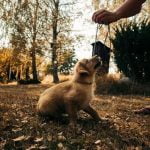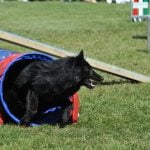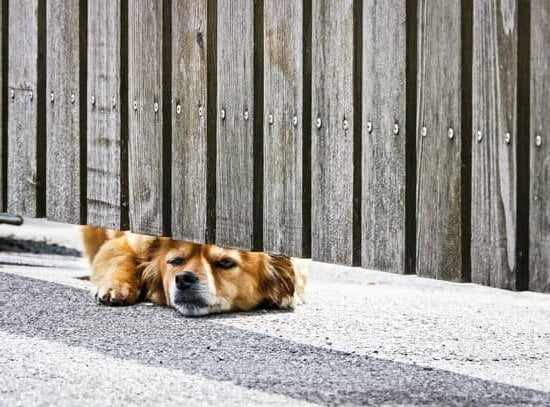Are you wondering how to train your dog to not nip? Nipping is a natural behavior for dogs, often exhibited during play or when they are seeking attention. Understanding why dogs nip is crucial in addressing and correcting this behavior effectively. In this article, we will explore the reasons behind nipping and provide you with valuable insights on how to prevent it.
Puppy socialization plays a significant role in nipping prevention. Introducing your puppy to various environments, people, and other animals at an early age can help them learn appropriate behavior and communication skills. Positive reinforcement training techniques are also essential in shaping your dog’s behavior. By rewarding good behavior and ignoring or redirecting negative behaviors like nipping, you can effectively teach your dog the right way to interact with others.
Setting clear boundaries and establishing rules for your dog is another key aspect of nipping prevention. Consistency in enforcing these rules is crucial to ensure that your dog understands what is expected of them. Additionally, finding fun and engaging alternatives to redirect nipping behavior can help keep your dog stimulated and focused on positive interactions. Remember, patience and persistence are key when training your furry companion to not nip.
The Importance of Puppy Socialization in Nipping Prevention
Puppies go through a critical developmental stage where they learn acceptable behaviors, including how to interact with other dogs and people. Socialization plays a crucial role in shaping a dog’s behavior, including their tendency to nip. By exposing your puppy to various experiences, environments, and interactions from an early age, you can help them become well-adjusted and confident pets.
Early Socialization Techniques
Introducing your puppy to different sights, sounds, smells, and textures at a young age can help prevent nipping behavior later on. Encourage positive interactions with other dogs and people to teach them appropriate social skills. Puppy classes or playdates can be beneficial for learning proper play behaviors and communication cues.
Teaching Bite Inhibition
One important aspect of socialization is teaching bite inhibition, which is the ability of a dog to control the force of their bite. Puppies naturally explore their environment with their mouths, but they need to learn how to inhibit the pressure of their bites. When a puppy nips too hard during play or exploration, let out a yelping sound or say “ouch” in a high-pitched tone to mimic another puppy’s response.
This teaches them that biting too hard causes discomfort and helps them understand how much pressure is appropriate. Gradually reduce the pressure tolerance over time until they learn not to nip at all.
Consistency in Socialization Practices
It’s essential to remain consistent in your socialization efforts throughout your dog’s life. Regular exposure to different environments, people, animals, and situations will help reinforce positive behaviors and prevent nipping tendencies from resurfacing.
Positive social experiences will also strengthen the bond between you and your furry companion while promoting good behavior. Remember that socialization is an ongoing process that requires patience and commitment, but the results are well worth the effort in creating a well-rounded and well-behaved pet.
Positive Reinforcement Training Techniques for Nipping Behavior
Nipping behavior is a common issue in dogs, especially in puppies who are teething or exploring their environment. However, it is essential to address this behavior early on to prevent it from becoming a habit. One effective way to train your dog to not nip is through positive reinforcement training techniques. By rewarding good behavior and ignoring or redirecting negative behavior, you can help your dog learn what is acceptable.
Here are some positive reinforcement training techniques you can implement to curb nipping behavior:
- Reward Good Behavior: Whenever your dog interacts with you or others without nipping, praise and reward them with treats or toys. This will reinforce the desired behavior and encourage them to continue behaving in a non-nipping manner.
- Use Clicker Training: Clicker training is a popular method that involves using a clicking sound followed by a treat when your dog displays the desired behavior. In the case of nipping, you can use the clicker to mark the moment your dog refrains from nipping and then reward them.
- Teach Bite Inhibition: Teaching your dog bite inhibition involves gently teaching them that their bites cause discomfort without causing harm. When your dog nips too hard, let out a high-pitched yelp and stop playtime for a few seconds. This mimics how other dogs would react during play.
By consistently using positive reinforcement techniques, you can effectively train your dog to not nip. Remember to be patient and consistent in your training efforts to see lasting results. If you are struggling with nipping behavior despite implementing these techniques, don’t hesitate to seek professional help from a certified dog trainer who can provide personalized guidance on how to address this issue effectively.
Setting Clear Boundaries
When it comes to training your dog to not nip, setting clear boundaries is crucial. Dogs thrive on structure and consistency, so establishing rules will help them understand what behaviors are acceptable and what are not. One important rule to set is that nipping is never okay, and there will be consequences for such behavior. Consistency in enforcing this rule is key to preventing nipping from becoming a habit.
To effectively establish rules for your dog, it’s essential to communicate in a way that they understand. Use firm but calm voice tones when correcting unwanted behaviors and be consistent in your responses. Avoid physical punishment as it can lead to fear or aggression in your dog. Instead, focus on redirecting their attention towards appropriate behaviors and reinforcing positive actions through treats, praise, or playtime.
Another important aspect of setting boundaries for your dog is providing them with structure and routine. Dogs thrive on predictability, so establish regular feeding times, potty breaks, exercise routines, and training sessions. By creating a predictable environment for your dog, you are helping them feel secure and confident in their daily activities. Remember that training takes time and patience, so be consistent in implementing rules and boundaries to effectively train your dog to not nip.
Redirecting Nipping Behavior
Nipping is a common behavior in dogs, especially during their puppy stage. While it may seem harmless, nipping can develop into a serious problem if not addressed early on. Fortunately, there are effective training techniques that can help redirect this behavior towards more positive alternatives. In this section, we will explore how to train your dog to not nip by incorporating fun and engaging activities.
Interactive Toys and Games
One of the best ways to redirect your dog’s nipping behavior is by providing them with interactive toys and games. Interactive toys, such as puzzle feeders or treat dispensers, can keep your dog mentally stimulated and engaged. These toys require your dog to work for their treats, which can help shift their focus away from nipping. Additionally, interactive games like tug-of-war or fetch can provide a constructive outlet for your dog’s energy and playfulness.
Training With Chew Toys
Chew toys are essential for teething puppies and adult dogs alike. Providing your dog with a variety of chew toys can help satisfy their natural urge to chew and nip. When your dog starts to nip at you or other objects, immediately redirect their attention to a chew toy instead. By consistently reinforcing this behavior, your dog will learn that chewing on toys is acceptable while nipping at humans is not.
Training Through Obedience Exercises
Incorporating obedience exercises into your daily routine can also help prevent nipping behavior in dogs. Teach your dog basic commands such as “sit,” “stay,” or “leave it.” Practice these commands regularly and reward them with treats or praise when they respond correctly.
Not only does this build a strong bond between you and your dog, but it also reinforces positive behaviors while discouraging nipping. Training obedience skills also provides mental stimulation for your dog, reducing the likelihood of excessive nipping due to boredom or pent-up energy.
By implementing these fun and engaging alternatives for redirecting nipping behavior, you can effectively train your dog to not nip. Remember that consistency is key in any training program, so be patient and persistent in reinforcing these positive behaviors. With time and effort, you will create a well-trained companion who understands the boundaries of acceptable behavior without resorting to nipping as a form of communication or play.
Consistency Is Key
Consistency is crucial when it comes to training your dog to not nip. By practicing the same techniques repeatedly, you can help reinforce positive behaviors and effectively eliminate nipping tendencies. Here are some tips on how to maintain consistency in your training efforts:
- Regular Training Sessions: Schedule regular training sessions with your dog to work on nipping behavior. Consistency in timing and duration will help your dog understand what is expected of them.
- Use the Same Commands: Make sure to use the same commands and cues consistently when training your dog. This will help them associate specific actions with certain commands, making it easier for them to understand what you want.
- Reward Good Behavior: Positive reinforcement is key in shaping your dog’s behavior. Rewarding good behavior consistently with treats, praise, or playtime will encourage them to continue behaving appropriately.
In addition to these tips, it’s important to stay patient and persistent in your training efforts. Remember that learning takes time, so don’t get discouraged if progress seems slow at first. Stay consistent with your approach and remain positive throughout the process.
Using a variety of reinforcement techniques can also keep training sessions interesting and engaging for both you and your dog. Consider incorporating playtime, toys, or even puzzle games into your training routine to make learning fun and rewarding for your furry friend.
By staying consistent in your training efforts and reinforcing positive behaviors, you’ll be well on your way to successfully teaching your dog not to nip. With patience, persistence, and a clear set of rules in place, you can create a harmonious relationship with your pet based on trust and understanding.
Seeking Professional Help
Training your dog to not nip can be a challenging task, especially if the behavior persists despite your best efforts. In such cases, seeking professional help from a qualified dog trainer can make a significant difference in addressing this issue effectively. A dog trainer can provide personalized guidance based on your dog’s specific needs, temperament, and behavior patterns. They have the expertise and experience to develop a customized training plan that targets your dog’s nipping behavior.
A professional dog trainer can also help identify any underlying reasons for your dog’s nipping behavior, such as fear, anxiety, or lack of socialization. By addressing these root causes, the trainer can implement strategies to modify your dog’s behavior successfully.
Working with a trainer can offer you valuable insights into how to train your dog to not nip in a safe and humane manner. They can also teach you effective communication techniques and positive reinforcement methods that strengthen the bond between you and your furry companion.
Before consulting a dog trainer, observe and document your dog’s nipping behavior patterns to provide the trainer with useful information. This will enable the trainer to tailor their approach based on the specific triggers for your dog’s nipping. Additionally, be open to learning new training techniques and implementing them consistently for optimal results.
Remember that every dog is unique, so it may take time and patience to see progress. With the right professional guidance and support, you can effectively address your dog’s nipping behavior and build a harmonious relationship based on trust and respect.
| Professional Help Benefits | Benefits |
|---|---|
| Personalized guidance | Effective training plan |
| Identification of root causes | Improved behavior modification |
| Enhanced communication skills | Strengthened bond with your pet |
Celebrating Success
As you continue on the journey of training your dog to not nip, it is important to recognize and celebrate the progress and growth that your furry friend has made. Training a dog is not always an easy task, and seeing improvements in their behavior is a reason for celebration. By acknowledging the success of your dog, you are reinforcing positive behaviors and strengthening the bond between you and your pet.
One way to celebrate your dog’s success in learning not to nip is by rewarding them with treats or praise when they exhibit good behavior. Positive reinforcement is a powerful tool in training dogs, as it helps them associate desirable actions with rewards. When your dog chooses not to nip or engages in an alternative behavior instead, make sure to provide them with treats, toys, or verbal affirmations to show them that they are doing the right thing.
Additionally, taking note of milestones and progress in your dog’s training journey can help you stay motivated and encourage further improvement. Keep a journal or log of training sessions, noting any breakthroughs or successes along the way. By reflecting on how far your dog has come since you started training them not to nip, you can appreciate the hard work and dedication both you and your pet have put into achieving this goal.
Conclusion
In conclusion, training your dog to not nip is crucial for fostering a healthy and strong bond between you and your furry companion. By understanding the reasons behind why dogs nip, implementing proper puppy socialization techniques, utilizing positive reinforcement training methods, setting clear boundaries, redirecting nipping behavior, and consistently reinforcing these techniques, you can effectively curb this undesirable behavior in your dog.
Remember that when it comes to training your dog to not nip, patience is key. It takes time and effort to instill new habits in our canine friends. Celebrate small victories along the way and acknowledge the progress your dog makes. Building a well-trained dog requires dedication and consistency on your part.
If you find that despite your best efforts, your dog continues to exhibit nipping behavior that is concerning or dangerous, do not hesitate to seek professional help from a certified dog trainer. They can provide valuable guidance and support in addressing stubborn nipping habits in your pet. With the right approach and commitment to training, you can create a harmonious relationship with your well-trained dog built on trust, respect, and love.
Frequently Asked Questions
How Do I Get My Dog to Stop Nipping?
One effective way to get your dog to stop nipping is through consistent training and redirection. By teaching your dog appropriate behaviors, setting boundaries, and providing alternatives like chew toys, you can help them learn to control their urge to nip.
Do Dogs Grow Out of Nipping?
Some dogs do grow out of nipping as they mature and develop better impulse control. It’s important to address the behavior early on through training and socialization to prevent it from becoming a habit that carries into adulthood.
How Long Does It Take to Train a Dog to Stop Nipping?
The time it takes to train a dog to stop nipping can vary depending on the individual dog, their age, breed, temperament, and previous experiences. Consistency in training methods, patience, positive reinforcement, and seeking professional help if needed can all impact the duration of the training process.

Welcome to the blog! I am a professional dog trainer and have been working with dogs for many years. In this blog, I will be discussing various topics related to dog training, including tips, tricks, and advice. I hope you find this information helpful and informative. Thanks for reading!





